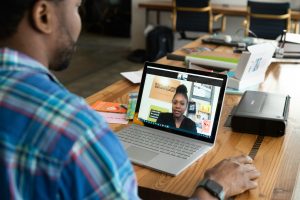1 What is Virtual Exchange?
Virtual Exchange (referred to as Virtual Global Learning at McMaster University) is the most general term for frameworks of teaching and learning that provide students opportunities to learn in digital environments with students from schools outside of their home country. One of the goals of a Virtual Exchange is for students to be exposed to diverse ways of being, doing, and knowing and, as a result, develop their intercultural awareness and skills. There are numerous terms used for a range of activities under this broad umbrella. Collaborative Online International Learning (COIL) is the most well-known, default “brand name” term. It was coined by Jon Rubin within the State University of New York (SUNY) system and defined as the use of various communication technologies to bring learners and educators together across different cultures and institutions to learn, discuss and collaborate on various projects and assignments (Rubin, 2017; SUNY COIL, n.d.). The label “Virtual Exchange” can be viewed as the more generalized standard term which encompasses various structural permutations, e.g., in-course projects, standalone courses, micro-credentials, or a range of experiential student activities. As the popularity of these practices grows around the world, many institutions have chosen to apply their own label to distinguish their approach. For the purposes of this guide, we use the term Virtual Exchange to describe a virtual collaboration (or exchange) that is embedded within the courses of two partner institutions.
 The modes of collaboration can take many forms (synchronous and asynchronous) and include a range of technologies including, but not limited to, online group discussions, instructor-facilitated video seminars, class-to-class meetings, and group projects. Virtual Exchanges are often interdisciplinary, allowing students from diverse academic backgrounds to collaborate and utilize their unique skills to find innovative solutions (Rubin, 2017). For instance, one Virtual Exchange project might involve health sciences students from McMaster working with business students from Johannesburg Business School (South Africa) to work on a solution to increase funding in rural health centers. Another Virtual Exchange project might prompt humanities students from McMaster to work with history students from the University of Melbourne (Australia) to explore the evolution of international relations over time. The possibilities of these interactions are endless. They can vary in length and format and can be adjusted based on the complexity of the projects and learning objectives of the course or curriculum.
The modes of collaboration can take many forms (synchronous and asynchronous) and include a range of technologies including, but not limited to, online group discussions, instructor-facilitated video seminars, class-to-class meetings, and group projects. Virtual Exchanges are often interdisciplinary, allowing students from diverse academic backgrounds to collaborate and utilize their unique skills to find innovative solutions (Rubin, 2017). For instance, one Virtual Exchange project might involve health sciences students from McMaster working with business students from Johannesburg Business School (South Africa) to work on a solution to increase funding in rural health centers. Another Virtual Exchange project might prompt humanities students from McMaster to work with history students from the University of Melbourne (Australia) to explore the evolution of international relations over time. The possibilities of these interactions are endless. They can vary in length and format and can be adjusted based on the complexity of the projects and learning objectives of the course or curriculum.
